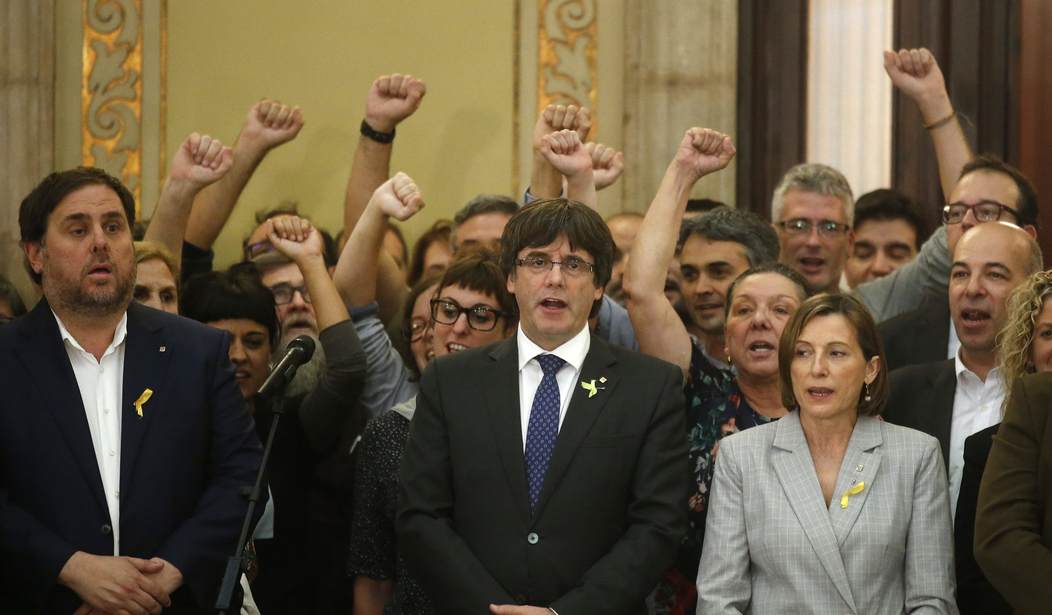They’ve done it! Catalonia declared independence from Spain today.
To the casual observer, the move may look like a strictly Spanish squabble. Indeed, much media focus will now be on whether Spain’s government in Madrid, which has now promised direct rule over the province, will start acting like a latter-day General Franco, the country’s fascist dictator from 1939 through 1975.
In short, will tanks roll in, or just the police?
Symptoms of Economic Illness
Unfortunately, the dispute between Barcelona and Madrid isn’t just a Spanish affair. It is a symptom of the European Union’s inflexible economic structure.
The problem at its core is the eurozone, the 19-country single-currency area.
“It is a system that rewards the most competitive countries such as Germany and penalizes the weak, like Spain and Greece,” says Dr. Ivo Pezzuto, professor of global economics and business at the International School of Management, in Paris.
For instance, Germany has a productive economy with unemployment at 3.6 percent and a large trade surplus where exports consistently outstrip imports.
Meanwhile, poorer countries like Spain are less productive. Spain has an unemployment rate of 16.4 percent, which is way down from the 24 percent seen in early 2015, according to data from Trading Economics. The country also has a hefty trade deficit – it consistently imports more than it exports.
What Spain needs is two things. First is an influx of investment. Such investment could buy capital equipment and help improve worker efficiency. But the government cannot do this themselves. Why? Shouldn’t the ultra-low interest rates in Europe make government borrowing cheap? Theoretically, yes.
“When politicians have to negotiate with international organizations there will be pressure to invest less,” says Pezzuto.
The issue is that going into debt is a problem for member countries of the Eurozone. Fiscal deficits cannot exceed 3 percent of GDP, according to single-currency EU rules. Of course, deficits occasionally do go bigger in some countries. And Spain already has debts amounting to around 99 percent of GDP, again according to data from Trading Economics. Lenders and organizations such as the International Monetary Fund routinely get worried when debt starts reaching such levels.
In fact, Spain introduced financial austerity measures earlier this decade to help slash spending. It got heralded as having worked as growth bounced back. However, that may mask regional differences, and there are disputes about whether the austerity was genuinely harsh.
The second thing that might help is a weaker exchange rate. Again, the EU’s rules prohibit this from happening. The euro currency is worth the same amount in dollars in both Spain and Germany. Cheapening the currency temporarily to help sell more goods and services abroad just isn’t an option for Spain.
Contrast the slow European economic recovery from the financial crisis of 2008-2009 with the relatively speedy situation in the U.S. and the UK. Both America and Britain ran substantial fiscal deficits (way more than 3 percent of GDP) and their currencies weakened. The dollar index fell and the pound dropped versus the dollar. Following those policies had the desired effect.
More Barcelonas on the Way?
Pezzuto says this rigid European economic system favors Germany, penalizes poorer countries, and could give rise to more separatist movements.
“[With such rules] we will have more and more a separation between the rich and poor regions,” says Pezzuto. And that leads to tensions like those in Catalonia, which is richer than much of Spain.
The reason is that while Spain’s austerity may have worked to help restore growth it may also have widened the gap between the richer and poorer regions of the country, that is between Catalonia and the rest of Spain. Hence the tensions between the two.
The current system most favors Germany, which has little incentive to change things. So expect more Catalonias.









Join the conversation as a VIP Member